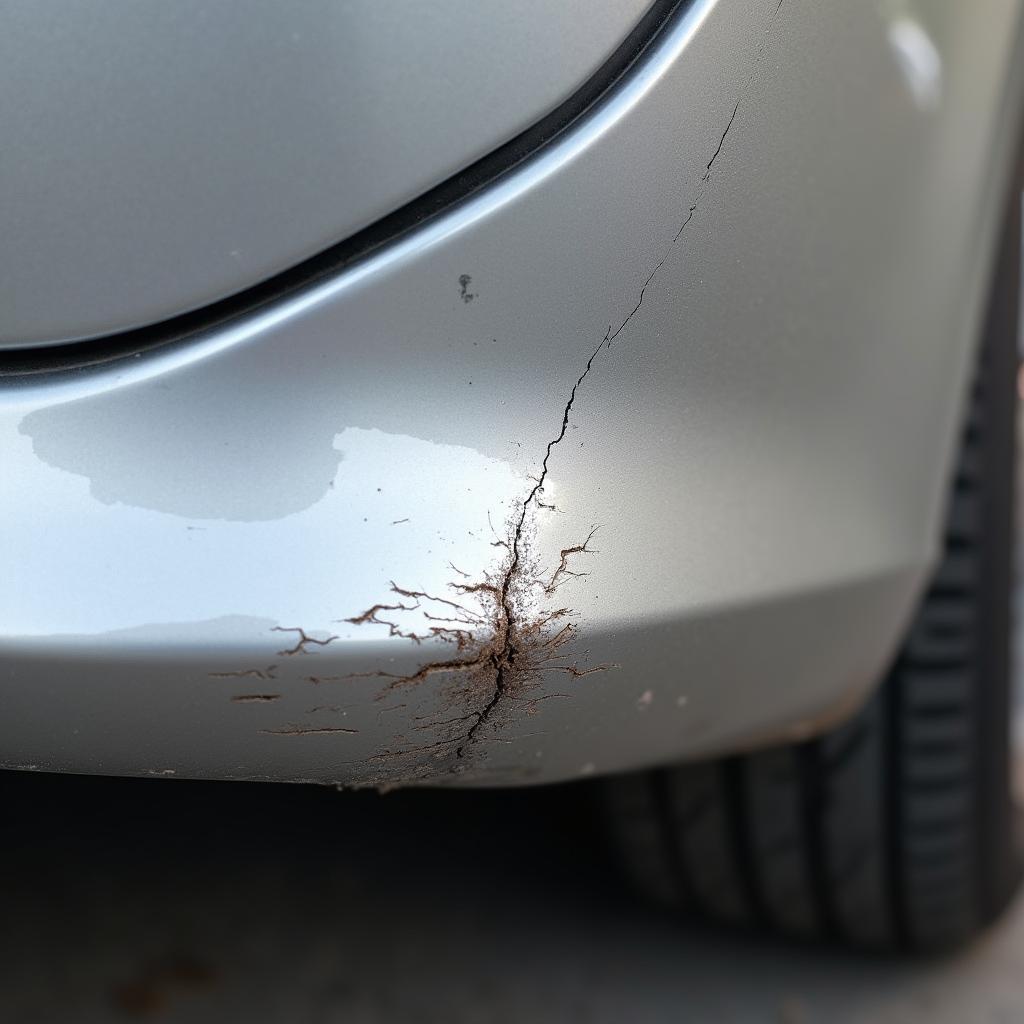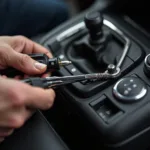A scratched or chipped bumper can be an eyesore, but a professional repair can be costly. That’s where a car bumper paint repair kit comes in handy. These kits offer a DIY solution for minor bumper damage, allowing you to restore your car’s appearance without breaking the bank.
Understanding Car Bumper Paint Repair Kits
Car bumper paint repair kits typically include everything you need to fix minor scratches, chips, and scuffs on your bumper. These kits often vary in terms of their contents, but most include:
- Sandpaper: Used to smooth out the damaged area and prepare it for painting.
- Primer: Provides a smooth surface for the paint to adhere to.
- Paint: Color-matched to your car’s original paint.
- Clear coat: Protects the paint and provides a glossy finish.
- Applicator tools: Such as brushes, touch-up pens, or spray cans, depending on the kit.
Choosing the Right Car Bumper Paint Repair Kit
Before purchasing a car bumper paint repair kit, consider the following factors:
- Severity of damage: Evaluate the extent of the damage. Some kits are designed for minor scratches, while others can handle deeper chips and scuffs.
- Type of bumper: Determine whether your car has a plastic or metal bumper, as this may affect your choice of kit.
- Color matching: Ensure that the paint color in the kit matches your car’s original paint code. This code is usually found on a sticker inside the driver’s side door jamb.
- Kit contents: Check the included components and make sure they are appropriate for your specific repair needs.
How to Use a Car Bumper Paint Repair Kit
Using a car bumper paint repair kit effectively requires patience and attention to detail. Here’s a step-by-step guide:
- Clean the area: Thoroughly wash and dry the damaged area to remove dirt, wax, and debris.
- Sand the surface: Use the provided sandpaper to smooth out any rough edges and create a level surface for painting. Start with a coarser grit and gradually move to a finer grit for a smooth finish.
- Apply primer (if necessary): If the damage exposes bare metal, apply a thin coat of primer to prevent rust and ensure paint adhesion. Allow the primer to dry completely before proceeding.
- Apply paint: Carefully apply thin coats of paint to the damaged area, allowing each coat to dry completely before applying the next. Use a brush, touch-up pen, or spray can, depending on the kit and your preference.
- Apply clear coat: Once the paint is dry, apply a thin coat of clear coat to protect the paint and provide a glossy finish. Again, allow each coat to dry completely before applying the next.
- Buff and polish: After the clear coat has fully cured (typically 24-48 hours), you can use a rubbing compound and polishing compound to blend the repaired area with the surrounding paintwork.
“Remember to follow the manufacturer’s instructions provided with the specific car bumper paint repair kit you choose, as application techniques may vary,” advises John Miller, a seasoned automotive paint specialist at Miller’s Auto Body.
Benefits of Using a Car Bumper Paint Repair Kit
Using a car bumper paint repair kit offers several benefits, including:
- Cost-effectiveness: DIY repairs are significantly cheaper than professional repairs.
- Convenience: Repair minor damage at your own pace and convenience.
- Improved aesthetics: Restore your car’s appearance and boost its resale value.
When to Seek Professional Repair
While car bumper paint repair kits are great for minor damage, some situations warrant professional attention:
- Extensive damage: Deep dents, cracks, or significant paint loss may require professional repair.
- Structural damage: Damage that affects the bumper’s structural integrity should be addressed by a professional.
- Safety concerns: If the damage affects any sensors or safety features, seek professional repair.
Maintaining Your Car’s Bumper
Regular maintenance can help prevent future bumper damage and keep your car looking its best:
- Regular washing: Wash your car regularly to remove dirt, grime, and road salt that can damage the paint.
- Waxing: Apply a protective layer of wax to your car’s paint, including the bumper, to shield it from the elements.
- Careful parking: Avoid parking too close to other vehicles or objects to prevent scratches and dents.
- Prompt repairs: Address any minor damage as soon as possible to prevent it from worsening.
By following these tips and using a car bumper paint repair kit for minor damage, you can keep your car looking its best for years to come.
Looking for a reliable car bumper repair shop in your area? Check out our list of recommended shops: car bumper repair shop near me.
If you’re dealing with a hole in your plastic bumper, we have a comprehensive guide on how to repair it: how to repair a hole in a plastic car bumper.
Remember, a well-maintained car is a reflection of its owner!



